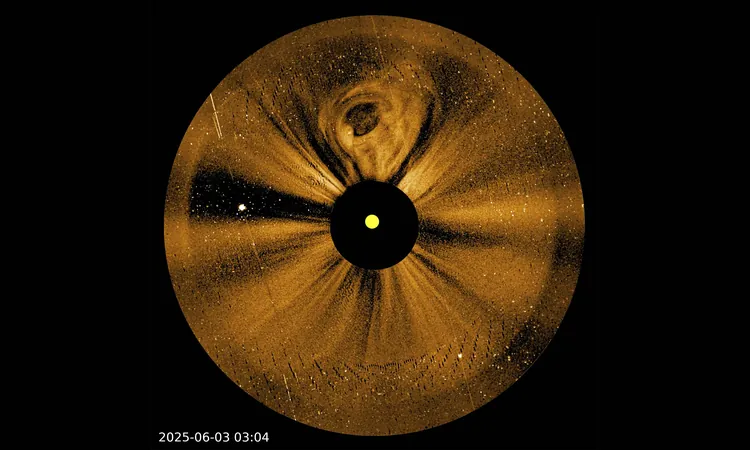
Soviet Spacecraft Set for Dramatic Re-Entry: Should We Be Worried?
2025-05-09
Author: Rajesh
A Legacy from Space Heads Back to Earth
Get ready, Earthlings! A vintage Soviet spacecraft, weighing in at half a ton and named Kosmos-482, is gearing up for a thrilling—and unpredictable—return to our planet. Designed in the early '70s for a daring landing on Venus, this old-timer has instead circled Earth for over five decades due to a rocket malfunction. Now, experts predict it could plummet through our atmosphere as soon as Saturday!
No Cause for Alarm—Yet!
While the idea of a massive metal object falling from the sky might sound alarming, experts assure us there’s no need to panic. According to the European Space Agency (ESA), it's not unusual for defunct satellites and spent rocket parts to re-enter Earth's atmosphere—this happens nearly every day! In fact, most of the time, these objects incinerate completely upon entering the atmosphere.
Stats to Soothe Your Worries
ESA officials have laid it out clearly: "The risk of any satellite reentry causing injury is extremely remote," they stated in their blog. To put numbers on it, a person is statistically more likely to be struck by lightning—about 65,000 times more likely—than to face injury from falling space debris. This nugget of information should ease your mind!
Timing is Everything
Predictions for Kosmos-482's re-entry vary slightly—NASA estimates it will swoop in around 4:26 a.m. ET, while the U.S. Space Force is eyeing an earlier drop at approximately 1:52 a.m. ET. However, due to the unpredictable nature of atmospheric dynamics and space weather, nailing down an exact time remains challenging.
Where Will It Land?
As for the landing zone—brace yourself! The possibilities stretch wide, from 52 degrees north to 52 degrees south latitude, covering vast regions of Africa, the Americas, Europe, and parts of Asia. Recent projections suggest Kosmos-482 could re-enter over the Pacific Ocean, west of Guam, or even dip down into the Southern Ocean near Australia.



 Brasil (PT)
Brasil (PT)
 Canada (EN)
Canada (EN)
 Chile (ES)
Chile (ES)
 Česko (CS)
Česko (CS)
 대한민국 (KO)
대한민국 (KO)
 España (ES)
España (ES)
 France (FR)
France (FR)
 Hong Kong (EN)
Hong Kong (EN)
 Italia (IT)
Italia (IT)
 日本 (JA)
日本 (JA)
 Magyarország (HU)
Magyarország (HU)
 Norge (NO)
Norge (NO)
 Polska (PL)
Polska (PL)
 Schweiz (DE)
Schweiz (DE)
 Singapore (EN)
Singapore (EN)
 Sverige (SV)
Sverige (SV)
 Suomi (FI)
Suomi (FI)
 Türkiye (TR)
Türkiye (TR)
 الإمارات العربية المتحدة (AR)
الإمارات العربية المتحدة (AR)